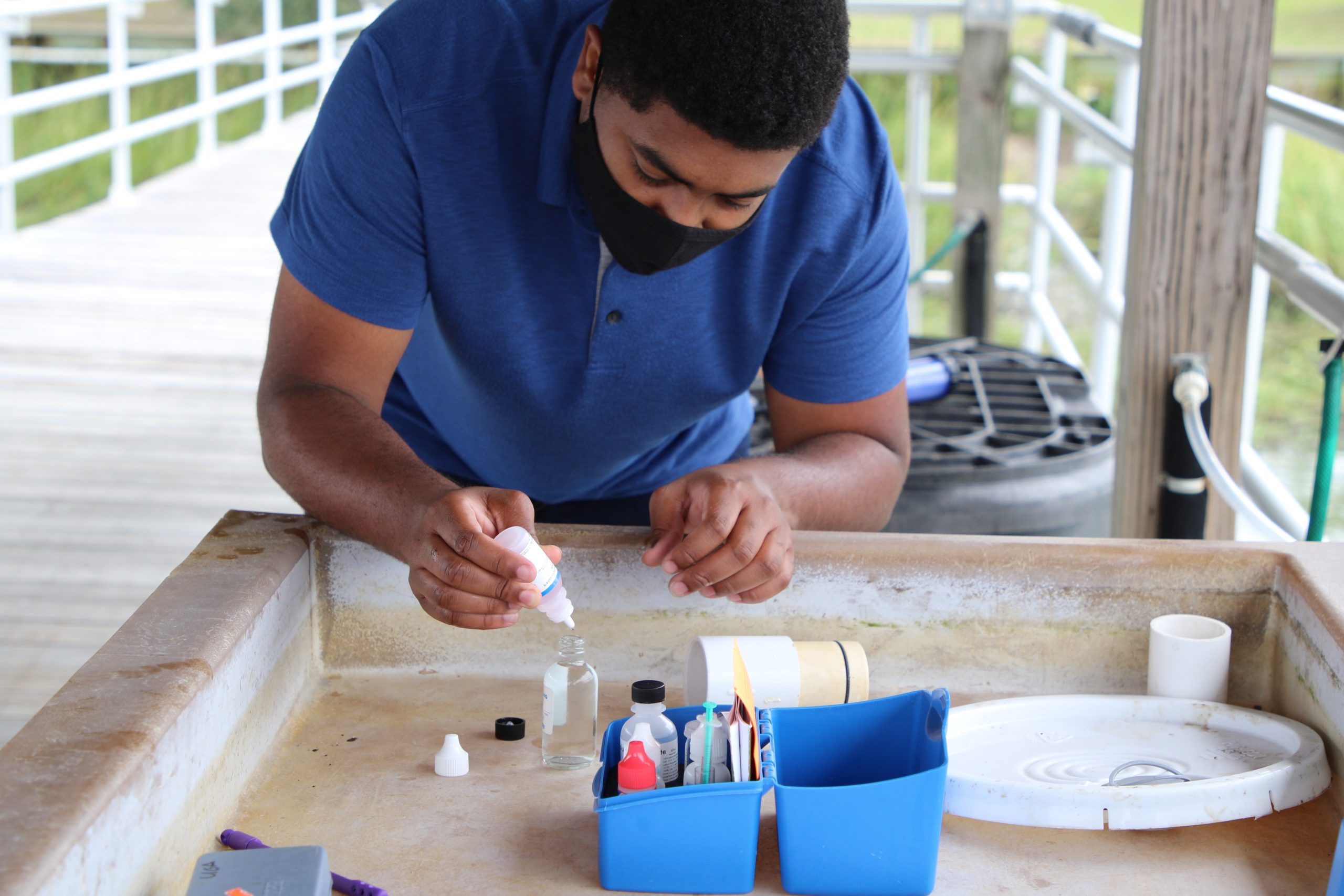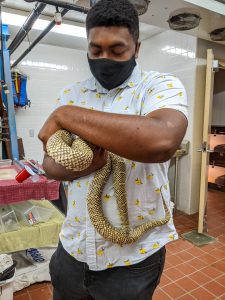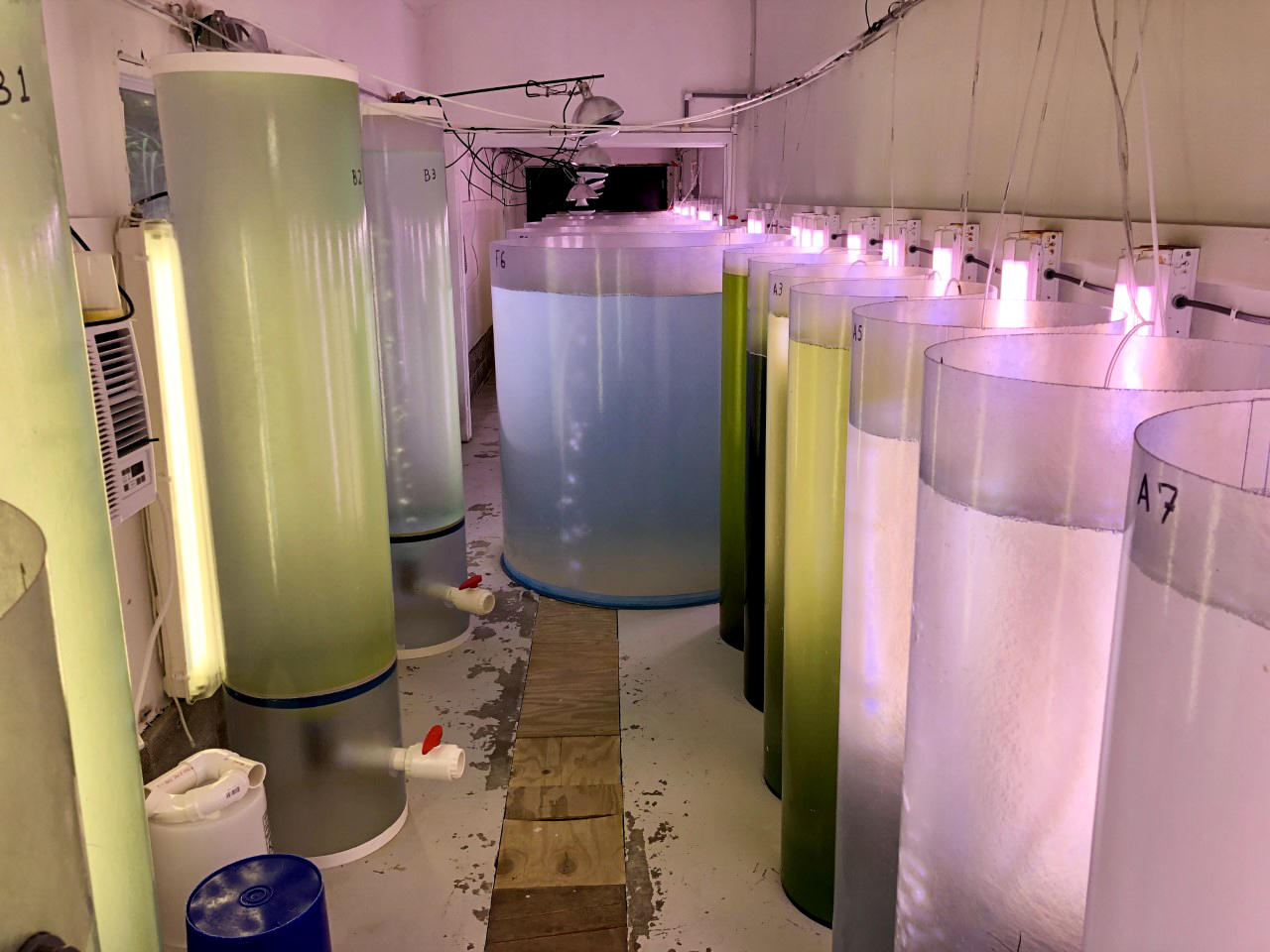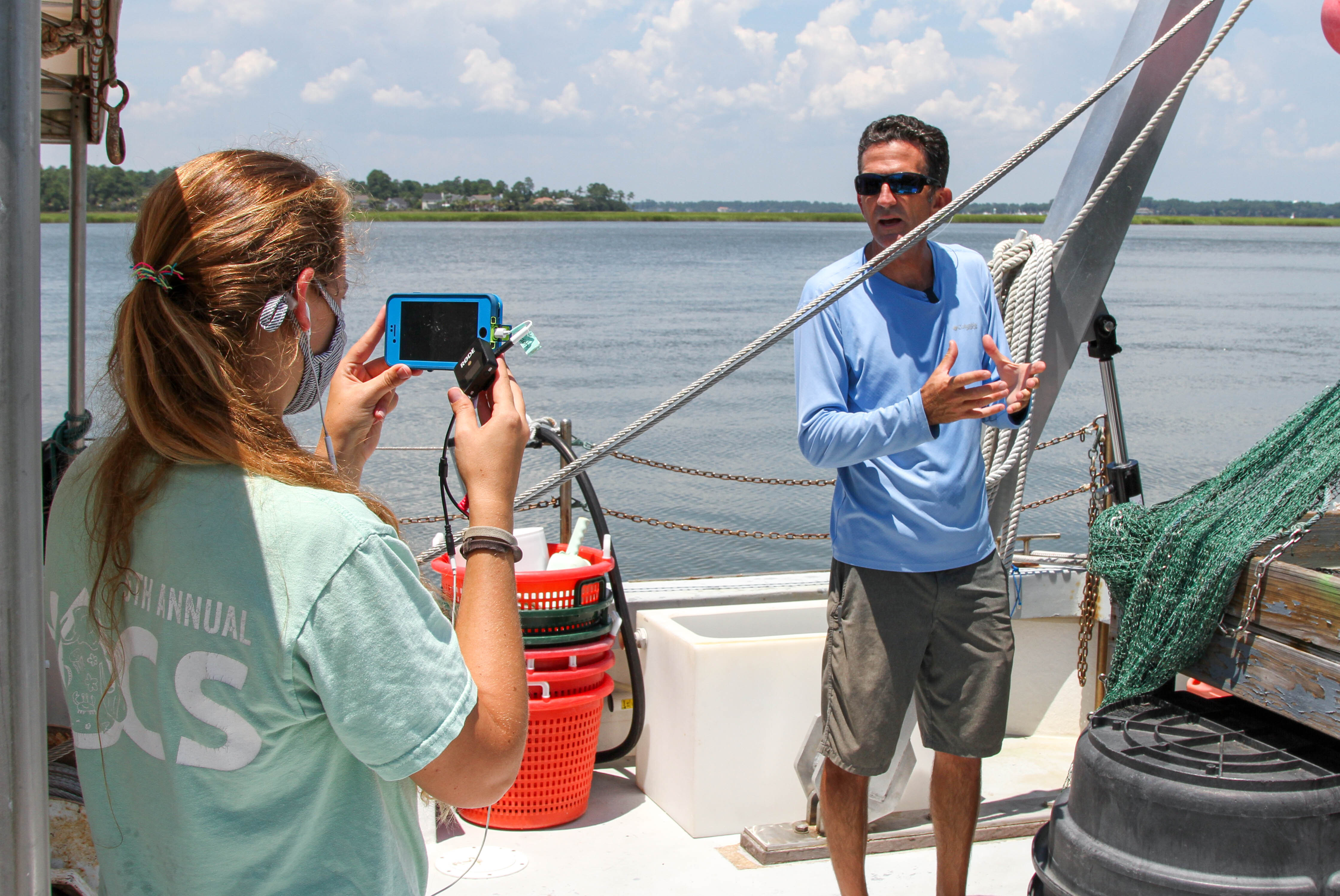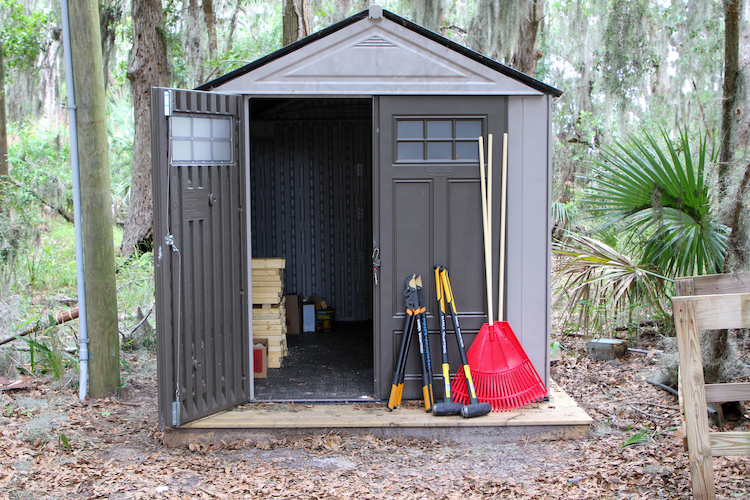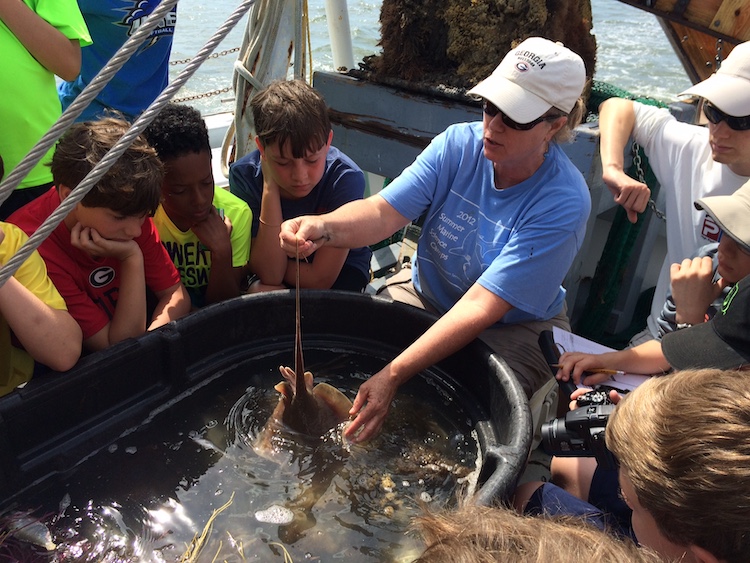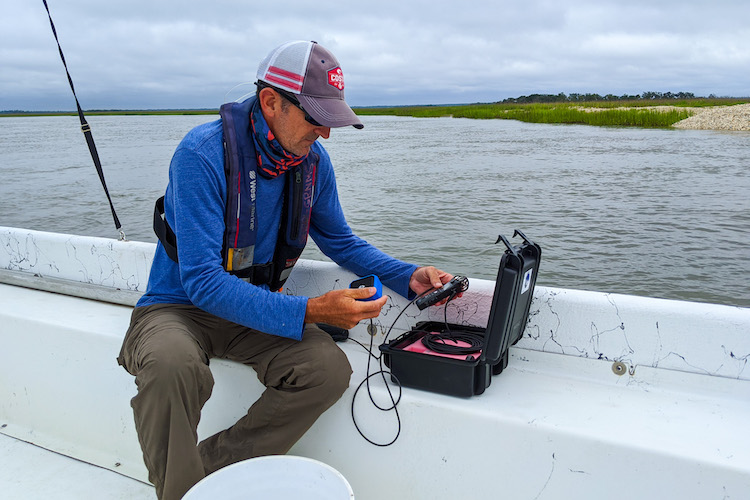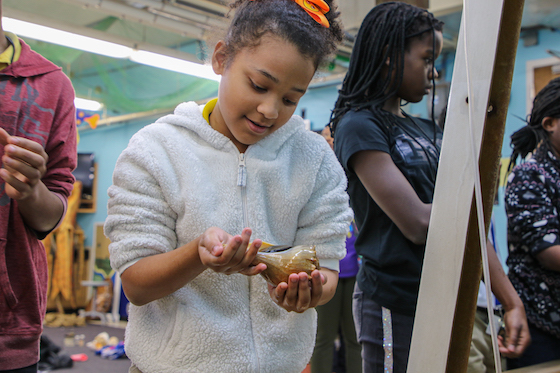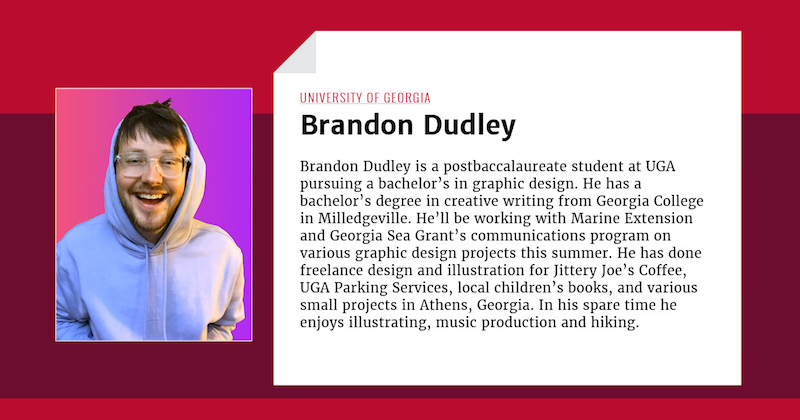For more than 50 years, educators at the UGA Marine Education Center and Aquarium on Skidaway Island have hosted pre-K-12 grade students for hands-on programs about the coastal environment.
This year, those educators are taking the show on the road.
With support from Bass Pro Shop, Georgia Power and Friends of the UGA Aquarium, Marine Extension and Georgia Sea Grant staff and volunteers are taking programs into every Savannah-Chatham County school.
“Classroom outreach brings exciting marine science experiences to students and teachers who don’t have the resources or time in their teaching schedules to visit the aquarium in person,” said Anne Lindsay, associate director of education at Marine Extension and Georgia Sea Grant. “We don’t want communities whose schools have limited resources to miss out on important learning opportunities.”
The education team began planning off-site outreach during the pandemic, when the aquarium was closed.
“Marine Debris, the Coast, and Me” introduces sixth and seventh graders to the topic of plastic debris and its impacts on the ocean and coastal zone. Students rotate between different stations, learning about the types of debris, including microplastics, that can impact plankton or dolphins through entanglement or ingestion. As a way of getting students involved outside of the classroom, educators share information about how to reduce marine debris by participating in community cleanups and avoiding single use plastics.
“CrabEcology” uses live animals and small group activities to teach third graders about the physical and behavioral characteristics of different crab species and where they can be found. The program covers topics such as coastal habitats, sand and mud studies, animal adaptations and Georgia’s blue crab fishery.
The goal of both is to engage students in learning experiences that connect them to the outside world. Since February, the marine education staff has presented the programs to more than 1,000 students in 12 different public schools.

Volunteer Michael Siegel educating students using an interactive touch tank.
Angela Willis, who teaches the STEM Lab for grades K-5 at Heard Elementary School in Savannah, signed her third graders up for the CrabEcology outreach program to expose them to outdoor activities that get them excited about the world around them.
“If we can stimulate children in a way that they’re using their sight, sound, sense of touch…it really engages them and anchors whatever topics you’re trying to teach,” said Willis. “Anything that’s hands-on is absolutely fantastic. When they saw there was a touch tank, just about all of them wanted to touch the crabs.”
In addition to the aquarium education staff, the outreach is being presented by four Marine Education Fellows who are spending a year at the UGA Aquarium gaining experience in environmental education. Diane Klement, who has a degree in ecology from UGA, helped deliver both outreach programs and created some of the teaching materials for the marine debris program.
“Over time, I gained more confidence with teaching and adapting a program to unique schools and classrooms,” Klement said. “Moving forward, I am excited to apply the outreach program development and teaching skills to my future career.” She will return to UGA this fall to pursue a master’s degree in wildlife science from the Warnell School of Forestry and Natural Resources.

Marine Education Fellow Diane Klement educating students at Heard Elementary School.
Aquarium educators and volunteers will continue offering the programs in classrooms throughout the 2022-23 school year, hoping to reach about 3,800 students in 46 different public schools.
It’s making a difference, Klement said.
“After the program, some of the students vowed to reduce their plastic consumption and were excited to get out and explore the salt marsh,” she said. “Some even said they wanted to be environmental educators.”
Contact Anne Moser, amoser@uga.edu, to make a gift to the UGA Foundation in support of Marine Extension and Georgia Sea Grant education programs.
Writer: Emily Kenworthy, ekenworthy@uga.edu, 336-466-1520
Contact: Anne Lindsay, lindsaya@uga.edu


